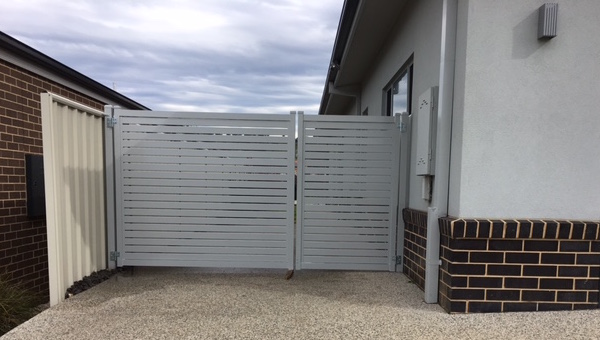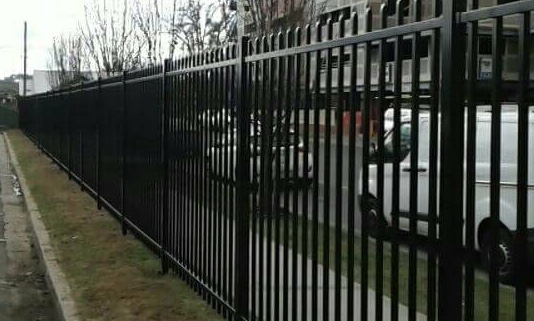Help! Our Dog Has Grown to be Able to Escape Over Our Fence, What Are Our Solutions?
If your dog has worked out how to escape over your fence you will need to find a solution as quickly as possible. Can you adjust your existing fence or is it time for a new fence? Here are some options to ensure that your furry escape artist is safe at home.
As a responsible dog owner, it’s important to ensure the safety of your furry friend and, as such, having a fence that can keep your pup safe in your yard is crucial. If your beloved pet has grown to be able to escape the safety of your property, it’s time to consider changing or improving the fencing around your property. So, what are your options if your pet is managing to escape over your fence? Is it possible to increase the height of your fence, or should you replace it entirely? Here are some options for improving your fencing to ensure that your pup is safely contained.
Add a lattice extension to your existing fence
If you’re unsure about buying a whole new fence, it might be possible to add height to your current wall. This will depend on the size of your dog and the height and condition of your current fencing. Lattice extensions are an easy way to add height onto Colorbond or timber fences. Apart from adding height, a lattice extension will give you the added bonus of a decorative feature and allows you to avoid missing out on the sunshine that a taller, solid wall would block out.
However, before you settle on the idea of using a lattice extension on your fence, it’s important to factor in that the lattice will not have the same strength profile as an unencumbered fence. The lattice extension will be less sturdy than the rest of the fence because it won’t be built within the original posts. This shouldn’t be a major concern, unless there’s a possibility that your dog will be able to reach the lattice and continuously put the pressure of its weight against it. In this scenario, it may be better to replace your fence with a taller, more durable option.
Replace your existing fence with a stronger, taller fence
Depending on the style, age, condition and design of your fence, it may not be worth the hassle of trying to alter it by adding an extension. It may be simpler, more reliable and less expensive in the long-term to replace the fence altogether. Jim’s Fencing offers a huge range of fencing that come with warranties of 10 years or more, and this will allow you to choose a fence that looks great and will offer you the peace of mind knowing that your new fence will be able to offer your dog security for the length of its life.
So, if you decide that replacing your fence with a taller, stronger fence is the best option, there is a huge range of choices that will suit your home and needs. Here are three popular fencing styles that will enable you to safely contain your pup on your property.
Modular walls are a minimalist-style fence made from posts, rails and solid blocks that have been slotted together. They are available in different colours and can be cladded to look like a masonry brick wall. Modular walls are well known for their soundproofing qualities and offer house owners dependable privacy and security. Modular walls are corrosion and combustion resistant and are tough enough to withstand the Australian climate. Modular walls are incredibly tough on their own, but if you have any safety concerns, you can also install an additional retaining wall.
Timber fences have been popular with Australian homeowners for decades, and it’s easy to see why. They offer your home a beautiful, natural look, are an affordable material to work with, and a long-lasting, tough solution to your fencing needs. Jim’s Fencing uses merbau as their number one timber choice, which is a tannin-rich hardwood that is naturally resistant to rot and termites.
Colorbond is a versatile type of steel used across Australia for fences, gutters, sheds and other exterior household elements. If you have a boisterous dog that loves to throw its body weight against a fence, they’ll be no match for your Colorbond fence. Colorbond is a hard-wearing material that is budget-friendly and manufactured using environmentally friendly processes.
Tips for making your existing fence secure for your pet
- Plant some dense shrubs on the fence line. This will add a layer of protection between the fence’s structure and your dog and make it harder for them to dig under or run at the wall at speed.
- Have your fence curve at the top. Fences that curve inward at the top are a common way to ‘dog-proof’ your fence. This innovative style prevents your dog from managing to scramble over the top of your fence.
- Inspect your fence regularly. Think about this – your dog is home alone with your fence all day. If there are any weak spots, they’ll sniff them out and will be able to try and make these minor damages worse while you’re away. Maintaining your fence and inspecting it for any visible damage will allow you to repair it before it can get worse.
- Add wire or PVC netting to your fence. Adding an additional layer of netting or wire can help to deter your dog from trying to scratch or dig near your fence.
Tips for managing your dog’s behaviour
Once you have a secure fence, you won’t need to worry much about your dog escaping. However, if they are constantly trying to dig or escape, it may be worth taking the time to address your pet’s behaviour. Here are some common reasons why dogs attempt to escape.
- Your dog is lonely. Dogs are social creatures, and with their human friends going away for extended periods during the day, they may be lonely or anxious.
- Your dog has too much energy. The energy level of pups differs between breeds, with some breeds (such as the greyhound) being happy to sleep 11 hours of the day and other breeds (like German shepherds or labradors) bursting with constant energy.
- It’s their breed. Some dog breeds, such as the Siberian husky, are naturally curious and clever, so they will enjoy trying to escape out of inquisitiveness.
- They’re on heat. Sexual roaming is a common cause of dogs escaping. Especially when they can hear, see or smell another dog, they will try to get near them, which means escaping their fenced backyard.
Here are some helpful tips to try and prevent your dog from wanting to escape:
- Take your dog on daily walks, give them plenty of time to exercise and play to tire them out.
- Consider getting second dog as a companion.
- Try to ensure that you have plenty of toys to keep your dogs entertained while you’re away.
- Try not to leave your dog alone for extended periods. Consider popping home on your lunch break, hiring a dog walker or sitter, or putting your dog in doggie day-care a couple of days a week.
- Keep your pup inside, or at least give them access to the inside of your home via a doggy door. They’ll appreciate having somewhere warm and cosy to sleep on rainy days, too!









